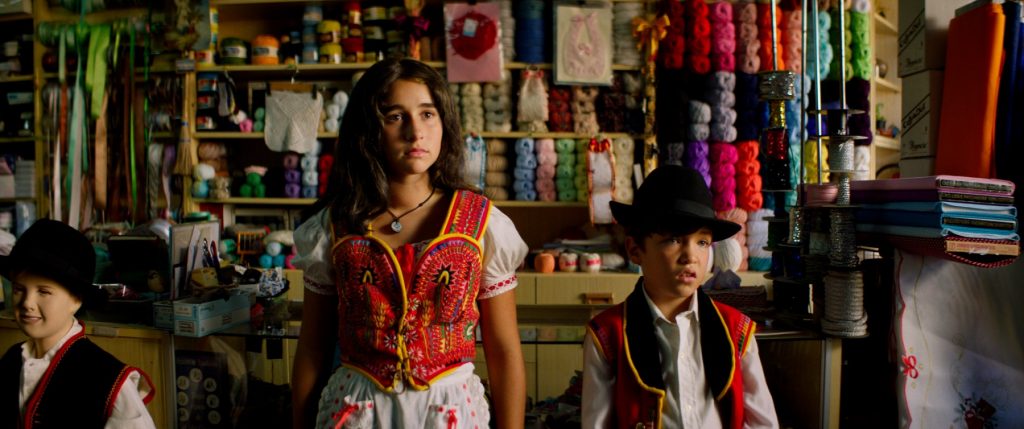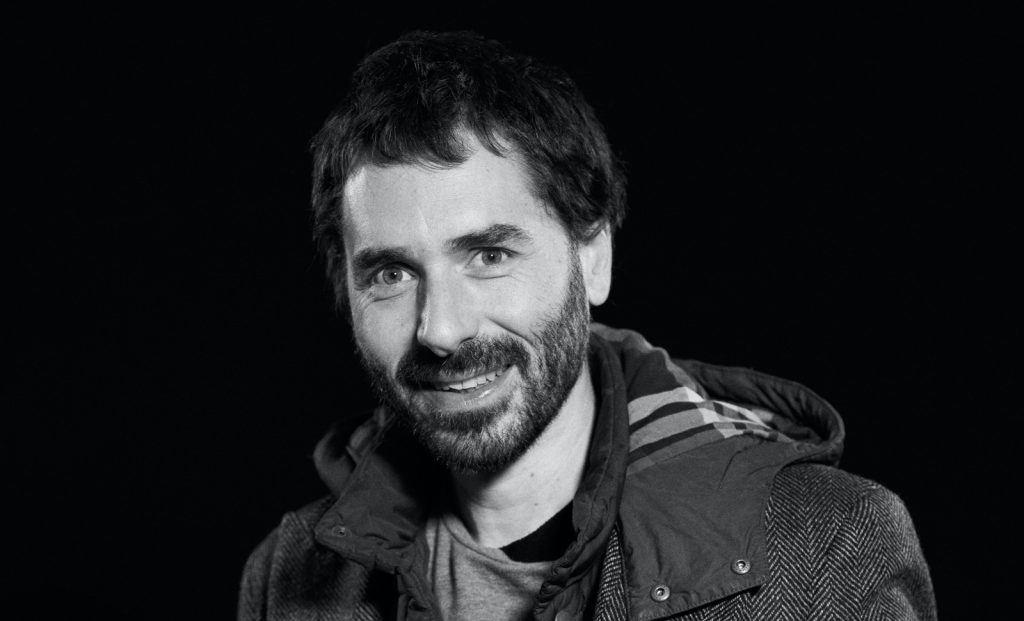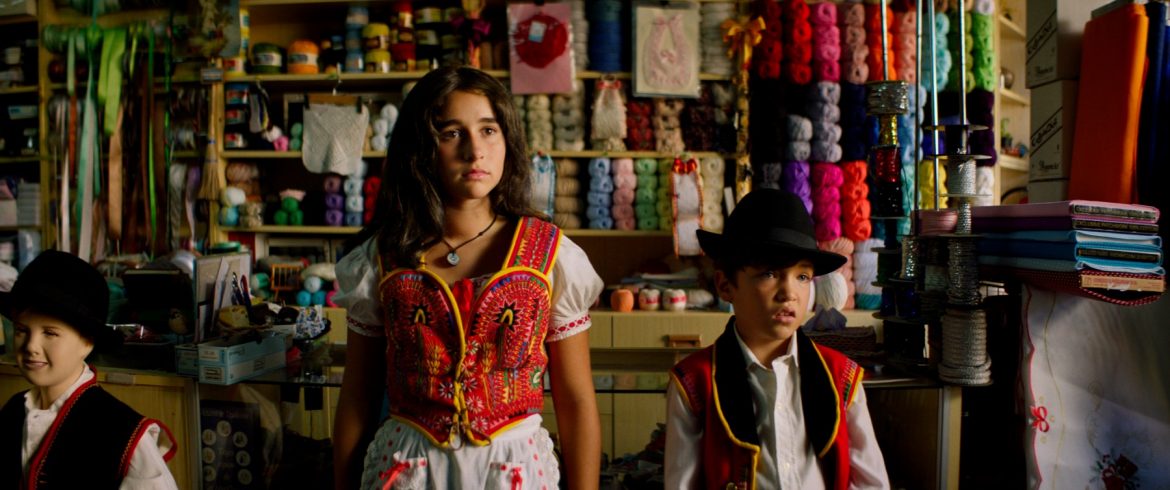The arrival of Michael Jackson on the island in 1993 is the starting point of a family story full of color and narrative intensity, with the performance of the young Paula Campos and Agustín Díaz as a priceless added value
Razzak achieves a familiar and close film, in certain islands that he also portrays as “a paradise where airplanes are always heard.”
The film competes in the feature film section of Canarias Cinema, after winning the Silver Biznaga for Best Spanish Film in the Zonazine section of the Malaga Festival, where Paula Campos also obtained the Silver Biznaga for Best Actress

Las Palmas de Gran Canaria, Saturday, April 15, 2023.- In 1993, Michael Jackson landed in Tenerife. His arrival transcended the scheduled concert and became a popular event. Over the years, he has ended up acting as an anchor in the story conceived by Omar Al Abdul Razzak in his original Killing Crabs: a Spanish-Dutch coproduction (with the Canarian Tourmalet Films and the Dutch IJwaterFilms) that portrays the reality of two brothers on that island in the early nineties. The result is a work that stands out for its texture, colors and a narrative that transports the viewer to another not-so-distant time. In fact, it appeals to the audience to find not only the sense of the story but also the flavor of the sensations it exudes. Killing Crabs recently triumphed at the Malaga Film Festival (it obtained the Silver Biznaga for Best Spanish Film in the Zonazine section as well as the Silver Biznaga for Best Actress to Paula Campos), and is now competing in the feature film section of Canarias Cinema, at the Las Palmas de Gran Canaria International Film Festival.
Was it complicated to produce a film set in last century’s early nineties? Not so much, apparently. “Tenerife today looks a lot like the nineties, actually,” explains the director. “We had very little time to get an art director and many people refused, because of how complex it seemed. Actually, I was telling them that everything is still the same. And it’s true, in the areas where we shot the landscape remains almost identical.” Although, he notes,there were other factors that helped to depict the moment: “the costume work was fantastic. We were more concerned about the colors, and the Art and Costume department did a fantastic job.“
Killing Crabs was shot mostly in Boca Cangrejo, “down the south coast” of the island. Omar Razzak trusts the environment, because “I used to rehearse there with a music group I had when I was very young. I knew the locations, and I had them in my head.” The surroundings of Los Rodeos Airport also became a popular location for a title that is far from being all about setting.
The story’s starting point was “the photo of Michael Jackson’s arrival, with two children dressed in typical costumes to welcome them,” recalls the Canarian filmmaker. “One of the girls seemed Nordic: very blonde, so that somehow the image also connected with tourism. Then, what did Michael Jackson do? He visited Loro Parque. That’s what I got the inspiration from,” says the director.
From there, Killing Crabs revolves around the story of a mother, played solidly by Sigrid Ojel, and her two children, played with surprising impunity by Paula Campos and Agustín Díaz. The woman, incidentally, works in that Loro Parque of the nineties, and the children live in a peculiar reality in their coastal environment.
The director resorted to proximity, to constant rehearsals in the family homes of the youngest actors and to an elaborate complicity with the core of the cast. “I decided not to use a coach, as is usual when working with children,” he says, “I wanted to find an environment in which we all felt comfortable.“
Silvia Navarro directed the casting, still in pandemic times, and most of the actors came from the Añaza area. Although the girl, Paula, “arrived by chance. She was the daughter of one of my father’s lifelong co-workers. Her aunt knew I was looking for people, and she told me to wait… It took her a month to bring her, because she didn’t want to act. But in the first audition I saw it. The thing is that the girl is an actress,” Razzak emphasizes. And “the boy is also spectacular. The truth is that the children are very intelligent, they understood everything and in the endit was very easy to work with them. They were very good actors.”
What has been captured on the screen proves him right. Because Killing Crabs presents a critical situation in the family, in that story that is approached almost as if from a documentary standpoint. But it is unequivocally supported by what the young actors convey on screen, full of authenticity, naturalness and freshness.
As an additional reward, “the film has helped Paula to become a good student,” says the island director. “In this shooting there were many women, and that caught her attention. It motivated her a lot to say ‘I want to continue studying.‘ Now she passes all of her subjects and even gets good grades, something that didn’t happen before.“Agustín, the boy, “was already a good student.“

Omar Razzak confesses that “I’m not very structured. I know the rules, and I know what you have to do to write the right screenplay. But in the end I get tangled up. I used that in the film. There’s a shot of a wall that looks like a collage, made with materials taken from one side and another. I told the Art crew to look at it, because that was the film.“
The description of his creative process is relevant, because his work is built “from a child’s fragmented memory. That is the idea of the mosaic”, though, “besides what I want to tell and that it talks about the clash between the new and the old, or the folklore and what comes from outside, what works very well in this film is the story of two brothers who realize that they only have each other.“
The filmmaker admits that he has achieved what he was looking for, “a very noisy film, in sound and color. Something I wanted to say was that the Canary Islands area paradise where airplanes are always heard.” And he explains that, although he usually works as an editor, too, in Killing Crabs he delegated this function to the Dutch Katharina Wartena because “she has a lot of experience and I couldn’t do the editing of this. Editing is exhausting, the film is there, you have to find it. If you work as a teamI think that makes for a better film. Here it was better to get some distance.”
Omar Razzak has become a regular at the Las Palmas de Gran Canaria International Film Festival, with a directorial résumé that includes the feature films Paradiso (2014) and The Calm Tempest (2016) and the short films Confined Spaces (2019) and La prima cosa (2021). In this edition he is also listed as producer of Defect (Amparo Aguilar, 2022) and the short film The Good Father (Jorge Cañada Escorihuela, 2022), with Tourmalet Films. “I like to go to the festival every year I can,” he stresses, “because of its programming, which is very good, and because of the filmmakers from the Canary Islands, sincealmost all of them usually go, and you talk to them, you get to know what they do. That’s important.“
SCREENINGS
DATE – TIME – SESSION – SCREEN
16 APRIL 12:00-13:50 JURY AND PUBLIC – CINESA EL MUELLE SCREEN 9
16 APRIL 20:00-22:00 Q&A | OMAR RAZZAK & PAULA CAMPOS – CINESA EL MUELLE SCREEN 9
23 APRIL 20:15-22:05 LAST SCREENING – CINESA EL MUELLE SCREEN 8
Share this Post

